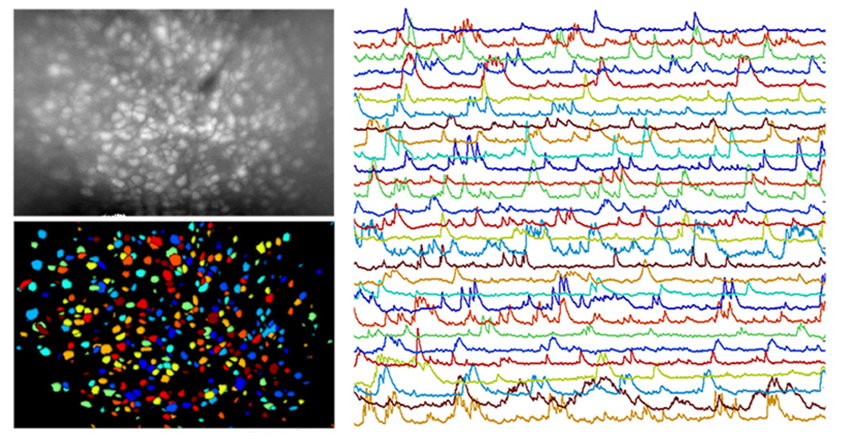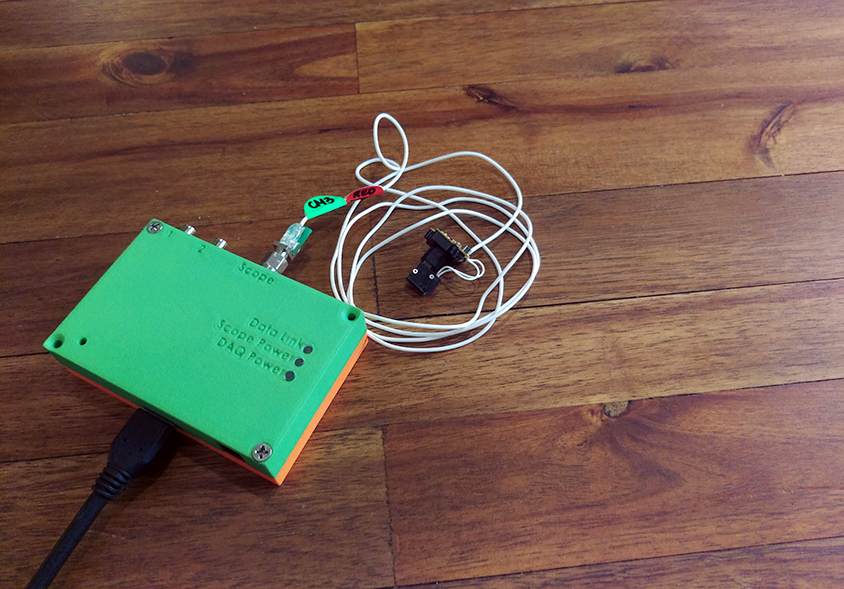
THIS ARTICLE IS MORE THAN FIVE YEARS OLD
This article is more than five years old. Autism research — and science in general — is constantly evolving, so older articles may contain information or theories that have been reevaluated since their original publication date.
More than 100 labs in 17 countries have built miniaturized microscopes that plug into the brains of mice, according to a report presented yesterday at the 2016 Society for Neuroscience annual meeting in San Diego.
Researchers revealed the blueprints for the fluorescent ‘Miniscopes’ at last year’s meeting. The devices, which weigh about 3 grams and are roughly the height of a Lego brick, can record the activity of neurons in mice as they move around a cage. They snap onto the animals’ heads via a magnet and relay data to a computer through an ultra-light wire.
In January, the researchers launched an online forum called Miniscope.org, where their colleagues can learn how to build the devices and suggest improvements. More than 1,100 scientists have signed up for the forum, says Daniel Aharoni, a postdoctoral researcher in Peyman Golshani’s lab at the University of California, Los Angeles.
“We wanted to build a community,” says Aharoni, who presented the work. “Now there are labs that are fully up and running, imaging regions that we’ve never tried to image, and they’re on the discussion boards answering questions for other people.”
Aleksandra Badura learned about the Miniscope last year. Her lab now uses the device to record from neurons in the mouse cerebellum, a brain region that helps to coordinate movement. A video on her phone shows neurons in the region lighting up as the mice move around.
“It’s just awesome,” says Badura, a postdoc in Chris De Zeeuw’s lab at the Netherlands Institute for Neuroscience in Amsterdam. “It took a few months to build everything, and there were some things we had to tweak, but it’s really amazing.”
Wireless plan:
Golshani’s team has made a wireless Miniscope that weighs 4 grams and can record more than 10 minutes of neuron firing. They plan to use the wireless device in mice with autism-linked mutations.
“We’re going to start to look at social behaviors,” says Golshani. The wireless version should enable them to study mice as they interact, without worrying about tangled wires. Ultimately, the researchers hope to test the effects of treatments on brain activity in the mice, Golshani says.

Makeshift microscope: Researchers can build their own Miniscope and modify it to suit their needs.
They also modified the Miniscope so it can perform optogenetics, in which light activates specific neurons. Another adjustment allows researchers to record electrical signals from neurons.
Researchers can find a list of Miniscope parts and vendors on Miniscope.org. Golshani and his team host workshops throughout the year to teach others how to build and use the devices. A workshop they held the week before this meeting drew 300 participants, they say.
For more reports from the 2016 Society for Neuroscience annual meeting, please click here.
By joining the discussion, you agree to our privacy policy.